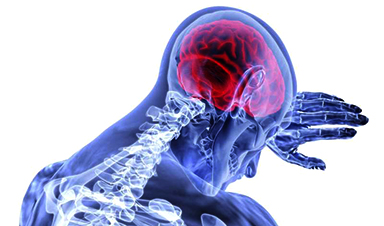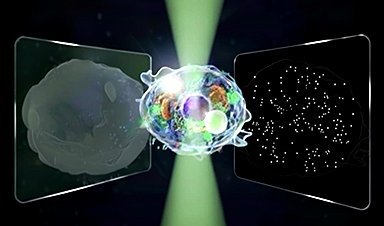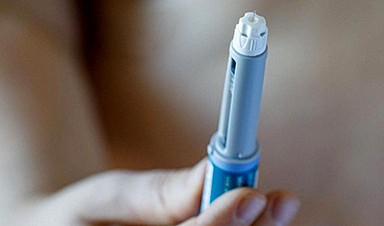Fungicides used in agriculture have been linked to an increase in resistance to antifungal drugs in both humans and animals.
Fungal infections are on the rise, and two UC Davis infectious disease experts, Dr. George Thompson and Dr. Angel Desai, are sounding the alarm. In a recent commentary published in the New England Journal of Medicine, they warn that new agricultural pesticides designed to kill harmful fungi might be making it harder to treat dangerous fungal infections in people and animals.
Fungi already cause serious health and economic problems around the world. While antifungal agents are essential tools in both medicine and agriculture, overuse or poorly coordinated development of these compounds could lead to fungi evolving resistance. This means that life-saving treatments for humans might stop working.
Thompson and Desai are urging the global community to adopt a “One Health” approach to developing, testing and using agents to fight pathogens like fungi and bacteria.
“Antimicrobial resistant pathogens are a constant reminder for us to use agents judiciously,” Thompson said. “We have learned that the widespread use of antibiotics for livestock resulted in the rapid development of resistance to antibacterials. We have similar concerns regarding the use of antifungals in the environment.”
Thompson is the article’s lead author. He is a professor at the UC Davis School of Medicine in the Department of Internal Medicine, Division of Infectious Diseases, and the Department of Medical Microbiology and Immunology.
A One Health approach proposes a more holistic view to health. It emphasizes how changes in one area — like human activity, animal health, or the environment — can have ripple effects across all three.
About antifungal resistance
Changes in the climate and the wind patterns can help spread pathogens like fungi. Also, human travelers, migrating animals, and the movement of contaminated items can carry pathogens to new areas.
In the last few decades, there has been a rapid increase in fungus types that cause severe infections in humans. One example of a difficult-to-treat fungus is Candida auris (C. auris).
“Fungi have similar cellular machinery to that of humans. This is why medications that kill fungi like C. auris often have side effects for people. With few antifungals to choose from during clinical care, preventing resistance is of paramount importance,” Thompson explained.
Coordinated pesticide development and use
Resistance to treatments is highly linked to the amount of each agent used, the authors wrote. They called for coordinated global regulation to slow the development of resistance to new antimicrobial agents.
“There is a need for a shared antimicrobial approval process that includes a thorough assessment of potential impacts on the environment and human and animal health. This is especially true before any new large-scale environmental and agricultural pesticide use,” Desai said. She is an associate professor in the Department of Internal Medicine.
Their report also noted the foundation of The Interagency Drug and Pesticide Resistance and Efficacy Workgroup, a new entity under The U.S. Environmental Protection Agency. It is tasked with providing input on upcoming compounds proposed for registration, including potential effects on medical practice. The authors said similar efforts are needed on a global scale.
They noted that shared decision-making among national and global regulatory agencies would be cost-effective. It might help avoid the more expensive and riskier prospects of the rapid spread of resistant pathogens.
Reference: “Addressing Antifungal Drug Resistance — A “One Health–One World” Challenge” by George R. ThompsonIII and Angel N. Desai, 11 June 2025, New England Journal of Medicine.
DOI: 10.1056/NEJMp2416548
News
Very low LDL-cholesterol correlates to fewer heart problems after stroke
Brigham and Women's Hospital's TIMI Study Group reports that in patients with prior ischemic stroke, very low achieved LDL-cholesterol correlated with fewer major adverse cardiovascular events and fewer recurrent strokes, without an apparent increase [...]
“Great Unified Microscope” Reveals Hidden Micro and Nano Worlds Inside Living Cells
University of Tokyo researchers have created a powerful new microscope that captures both forward- and back-scattered light at once, letting scientists see everything from large cell structures to tiny nanoscale particles in a single shot. Researchers [...]
Breakthrough Alzheimer’s Drug Has a Hidden Problem
Researchers in Japan found that although the Alzheimer’s drug lecanemab successfully removes amyloid plaques from the brain, it does not restore the brain’s waste-clearing system within the first few months of treatment. The study suggests that [...]
Concerning New Research Reveals Colon Cancer Is Skyrocketing in Adults Under 50
Colorectal cancer is striking younger adults at alarming rates, driven by lifestyle and genetic factors. Colorectal cancer (CRC) develops when abnormal cells grow uncontrollably in the colon or rectum, forming tumors that can eventually [...]
Scientists Discover a Natural, Non-Addictive Way To Block Pain That Could Replace Opioids
Scientists have discovered that the body can naturally dull pain through its own localized “benzodiazepine-like” peptides. A groundbreaking study led by a University of Leeds scientist has unveiled new insights into how the body manages pain, [...]
GLP-1 Drugs Like Ozempic Work, but New Research Reveals a Major Catch
Three new Cochrane reviews find evidence that GLP-1 drugs lead to clinically meaningful weight loss, though industry-funded studies raise concerns. Three new reviews from Cochrane have found that GLP-1 medications can lead to significant [...]
How a Palm-Sized Laser Could Change Medicine and Manufacturing
Researchers have developed an innovative and versatile system designed for a new generation of short-pulse lasers. Lasers that produce extremely short bursts of light are known for their remarkable precision, making them indispensable tools [...]
New nanoparticles stimulate the immune system to attack ovarian tumors
Cancer immunotherapy, which uses drugs that stimulate the body’s immune cells to attack tumors, is a promising approach to treating many types of cancer. However, it doesn’t work well for some tumors, including ovarian [...]
New Drug Kills Cancer 20,000x More Effectively With No Detectable Side Effects
By restructuring a common chemotherapy drug, scientists increased its potency by 20,000 times. In a significant step forward for cancer therapy, researchers at Northwestern University have redesigned the molecular structure of a well-known chemotherapy drug, greatly [...]
Lipid nanoparticles discovered that can deliver mRNA directly into heart muscle cells
Cardiovascular disease continues to be the leading cause of death worldwide. But advances in heart-failure therapeutics have stalled, largely due to the difficulty of delivering treatments at the cellular level. Now, a UC Berkeley-led [...]
The basic mechanisms of visual attention emerged over 500 million years ago, study suggests
The brain does not need its sophisticated cortex to interpret the visual world. A new study published in PLOS Biology demonstrates that a much older structure, the superior colliculus, contains the necessary circuitry to perform the [...]
AI Is Overheating. This New Technology Could Be the Fix
Engineers have developed a passive evaporative cooling membrane that dramatically improves heat removal for electronics and data centers Engineers at the University of California San Diego have created an innovative cooling system designed to greatly enhance [...]
New nanomedicine wipes out leukemia in animal study
In a promising advance for cancer treatment, Northwestern University scientists have re-engineered the molecular structure of a common chemotherapy drug, making it dramatically more soluble and effective and less toxic. In the new study, [...]
Mystery Solved: Scientists Find Cause for Unexplained, Deadly Diseases
A study reveals that a protein called RPA is essential for maintaining chromosome stability by stimulating telomerase. New findings from the University of Wisconsin-Madison suggest that problems with a key protein that helps preserve chromosome stability [...]
Nanotech Blocks Infection and Speed Up Chronic Wound Recovery
A new nanotech-based formulation using quercetin and omega-3 fatty acids shows promise in halting bacterial biofilms and boosting skin cell repair. Scientists have developed a nanotechnology-based treatment to fight bacterial biofilms in wound infections. The [...]
Researchers propose five key questions for effective adoption of AI in clinical practice
While Artificial Intelligence (AI) can be a powerful tool that physicians can use to help diagnose their patients and has great potential to improve accuracy, efficiency and patient safety, it has its drawbacks. It [...]





















